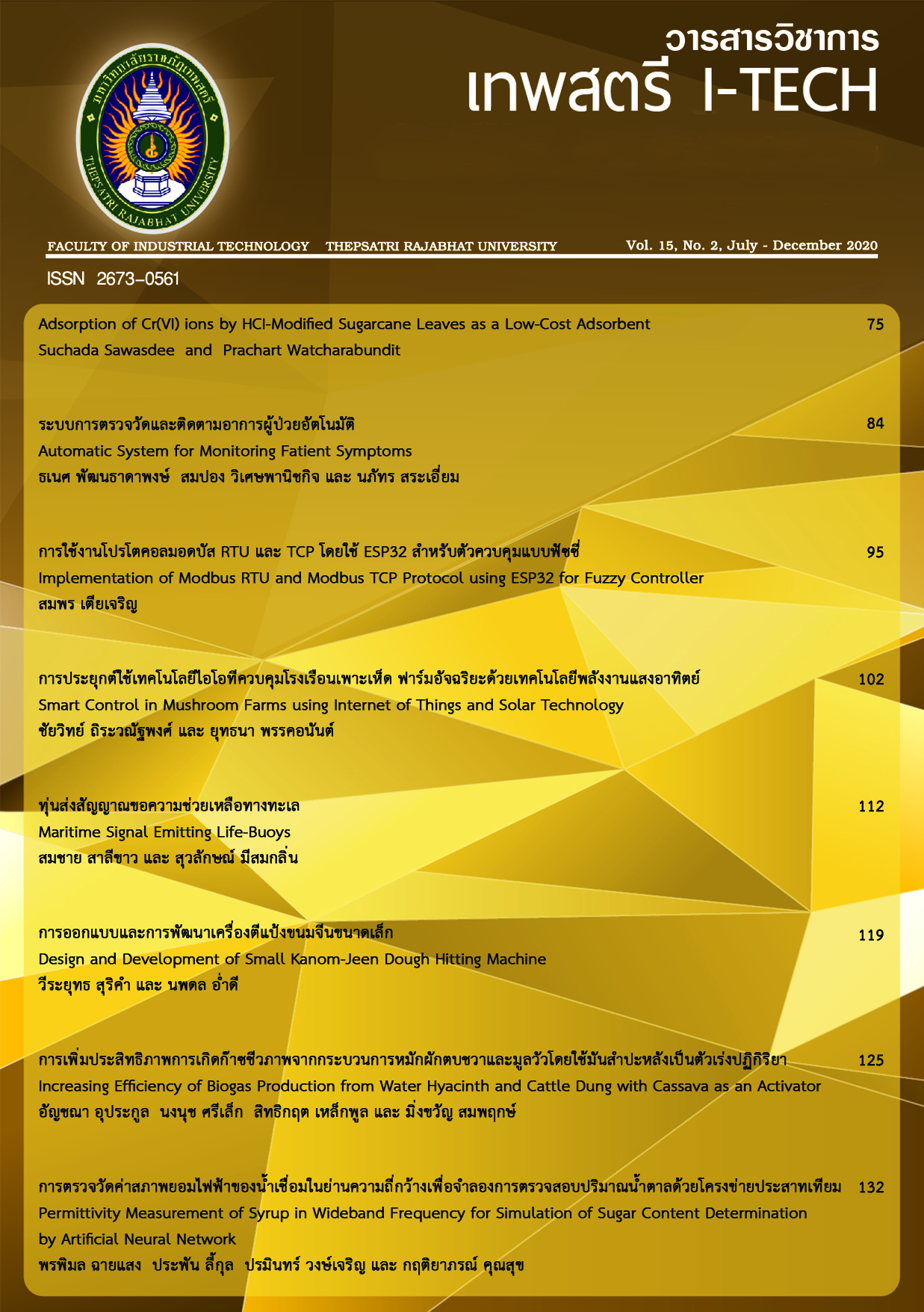Adsorption of Cr(VI) ions by HCl-Modified Sugarcane Leaves as a Low-Cost Adsorbent
Abstract
The Cr(VI) effluent wastewater is a major source of environmental pollution. The Cr(VI) is more toxic at lower concentrations than Cr(III) due to carcinogenic and teratogenic effects. Agricultural waste materials have been used for treatment of wastewater. In this work, the potential of HCl-modified sugarcane leaves were used as an adsorbent for the hexavalent chromium removal in the batch adsorption process. The various experimental conditions such as pH (2-5), contact time (5-360 min), initial Cr(VI) concentration (10-50 mg/L), and temperature (20-40°C) were evaluated. The experimental results showed that the Cr(VI) adsorption increased with contact time and initial Cr(VI) concentration. The adsorption attained the equilibrium at 240 min. The maximum Cr(VI) adsorption occurred at pH 2. The kinetics of Cr(VI) adsorption was described using pseudo-first-order and pseudo-second-order kinetic models. The kinetic adsorption data were fitted well by the pseudo-second-order kinetic model. The equilibrium adsorption data were analyzed using the Langmuir and Freundlich isotherm. The equilibrium of Cr(VI) adsorption data were better fitted by the Langmuir isotherm, and the maximum adsorption capacity was 26.67 mg/g at 30°C. Thermodynamic parameters such as ΔG, ΔH and ΔS for the adsorption showed that the adsorption was spontaneous and endothermic. This study indicated that the low-cost acid-modified adsorbent is an effective adsorbent for the hexavalent chromium removal in aqueous solution.

